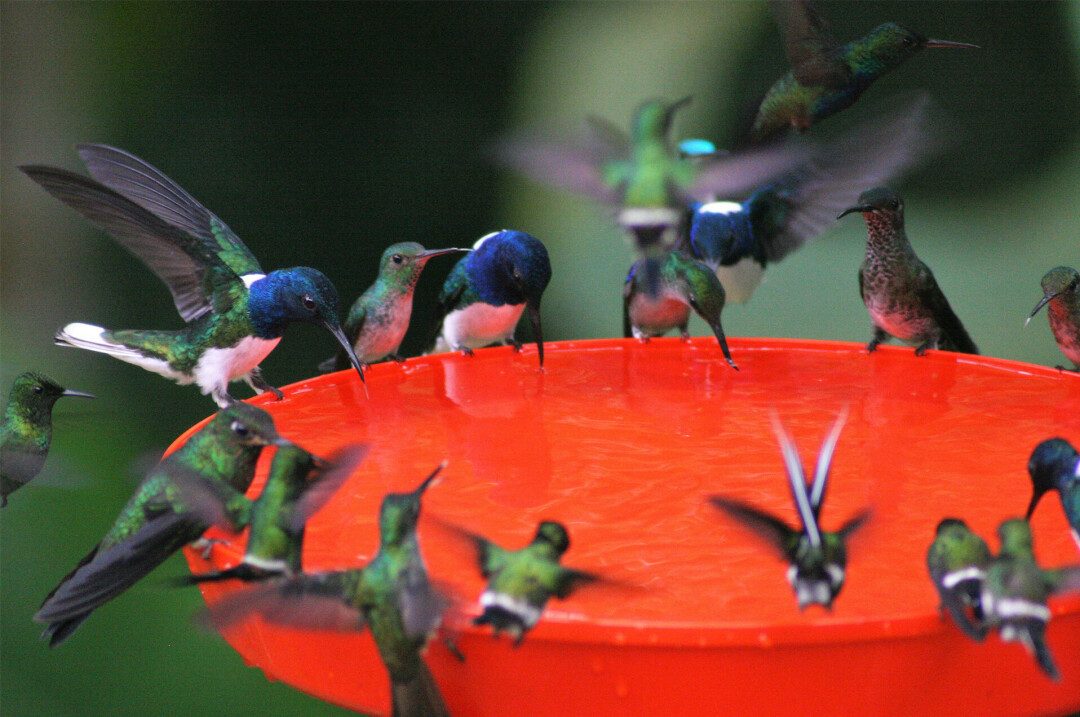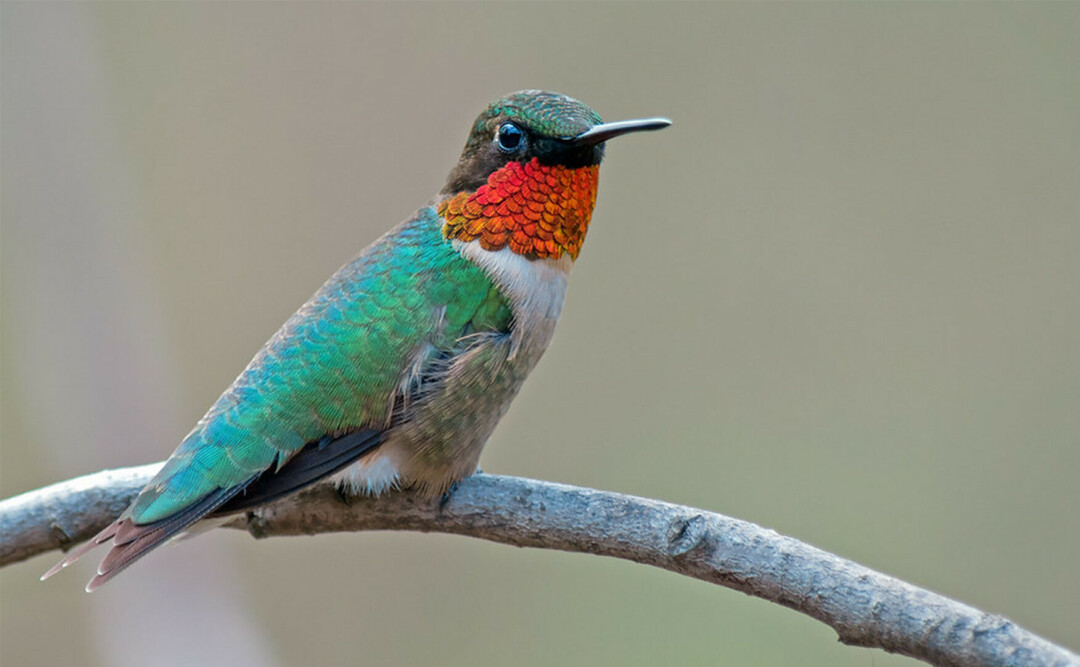HUMMINGBIRD HARMONY: Learning More About Earth’s Avian Jewels
good-to-know facts from a local hummingbird expert

“If you take a hummingbird and distill it down to its most intense and concentrated elements … (you get) energy, color, brilliance, (and) courage,” Steve Betchkal, a local ornithologist, said.
Hummingbirds fly uniquely throughout the Western Hemisphere and are unlike other birds from wing motion to food source. Here in the Chippewa Valley, the weather is finally offering consistent warmth, birds are chirping at sunrise, and the birders come out to play with binoculars on hand and bird feeders filled with hopes to see a jewel from the sky.
In conversation with Betchkal, a few things were noted for folks to know about their bird feeders and the winged friends who visit them.
we feed birds because we like it; birds don't need us ... there's no bird that can't find food in april – they've been doing it for a million years.
steve betchkal
local ornithologist
There is only one Hummingbird species that is native to Wisconsin – the Ruby Throated Hummingbird – however, many come to visit our gorgeous state. Hummingbirds are the smallest birds in the world with a tongue that rolls all the way up into the back of their head, ultraviolet vision, and the fastest metabolism among their winged peers. They can lick up to 13 times per second and eat nectar, insects, and spiders. Hummingbirds are bright and display varying color sequences, tail lengths, shapes, and beaks.
But, as always, we have to be responsible with how we interact with them. “We feed birds because we like it,” Betchkal started. “Birds don’t need us … There’s no bird that can’t find food in April – they’ve been doing it for a million years,” he laughed. “I think that when people feed birds, they fall in love with birds, and that is great for conservation.”
“You have to clean (hummingbird feeders) often (in the summer) because the heat can allow bacteria to grow,” he said. “If you are going to feed them, do it on the fringe seasons … in May when they’re coming in and they’re really hungry, or in September (and) October when they’re migrating … In the summer, it’s better to have plants in your yard that can feed them naturally.”
Feeding a bird in the winter when there’s less food crawling about could save a bird’s life. In the summer, consider planting native species that provide cover, nesting structure, and food, including conifers, oaks, and hackberry trees and petunias, zinnias, or cardinal flowers that feature a bell shape. And, keep your cats indoors!
Each bird sighting is exciting and can feel as precious as stumbling upon a jewel in the Earth. However, with their numbers declining, those sightings are becoming less frequent over time. There are always intentional ways to best serve our friends in flight: The first step is learning. “Want to help birds? Consider human behaviors!”

Learn more about hummingbirds or birds of the Chippewa Valley with birding resources at Beaver Creek Reserve (S1 County Road K, Fall Creek) or reach out to Ornithologist Steve Betchkal directly at stevebetchkal@gmail.com.






















